Health Focus – Abscesses in Pets
ABSCESSES
[ad#Commission Junction Pet Mountain]
WHAT IS AN ABSCESS?
IS AN ABSCESS DANGEROUS FOR MY PET?
DIFFERENT TYPES OF ABSCESSES
Classic Skin Abscess from Fighting
Anal Gland Abscess
Carnassial Tooth Abscess
Abscesses Behind the Eye (Retrobulbar Abscesses)
Abscesses from Foreign Bodies
STEP BY STEP TREATMENT OF CAT FIGHT ABSCESSES
PREVENTING CAT FIGHT ABSCESSES
WHAT IS AN ABSCESS?
An abscess in a collection of pus under the skin. It is most often caused by a penetrating injury to the skin for example, a cat fight, or a thorn going into the skin. Cats have very elastic skin. What this means is that, when a tooth goes through the skin, the hole closes automatically, and dirt and bacteria (germs) get trapped under the skin. White blood cells are like vacuum cleaners or Hoovers. They gobble up infection and dirt and also release chemicals into the area that attract more white blood cells and open up the capillaries and veins supplying blood to the area. Once they have gobbled the bacteria and dirt up, they die. If too many accumulate in one area, the body can’t clear the dead cells fast enough and a collection of dead white blood cells and bacteria form, called an abscess. Sometimes abscesses have gas in them from the bacteria fermenting the dead tissue. I would recommend taking your animal into the vet if you suspect he/she has an abscess.
IS AN ABSCESS DANGEROUS FOR MY PET?
In most cases, no. But I have seen animals die from abscesses that are very large. The rotting bacteria and white blood cells release poisons into the body that can make an animal feel very sick.
If your pet has an abscess and has stopped eating, you should get him into the vet as soon as possible. Cats that get into many fights that are bad enough to cause abscesses are also likely to pick up Feline AIDS/Feline immunodeficiency virus/FIV from fighting. FIV, like human AIDS, is invariably a fatal virus. Some complicated abscesses will not heal properly without antibiotics and will look like they are healing then open up again a few days later. These need veterinary attention.
DIFFERENT TYPES OF ABSCESSES
Classic Skin Abscess from Fighting:
This will look like a localized swelling, most often on the front legs, the face or the base of the tail in cats. Sometimes people only notice them when they see the fur is matted with pus and blood because the abscess has already burst. These are very painful and your usually calm cat may try to bite you or growl at you when he is touched. Sometimes you can feel hard scabs in the fur or see a few hairs stuck together that will give you a clue as to what is hiding underneath all the fur. Once the hair is clipped short, a few bite wounds, scabs, bruising and swelling are seen.
If the abscess has already burst, there will be a hole where the pus drained out. These need to be lanced and flushed out and a course of antibiotics given. If there are a number of bites close together in dogs or cats, they can all join together under the skin to form a complicated abscess made of passages of pus or one big abscess with many holes leading in and out of it. These will need drains put in under general anesthetic and a longer course of antibiotics than a simple abscess.
A blocked infected anal gland can form an abscess that bursts through the skin near the anus. Anal glands are scent glands in dogs and cats, that are supposed to release chemicals when they pass a stool that marks their territory. There are 2 glands, one on either side and slightly below the anus. They drain through a duct just inside the anus. If the duct gets blocked, the gland carries on producing anal gland content anyway, which builds up and causes discomfort. Your pet may start to scoot on his back end or rub his anus on the carpet or grass to try and relieve the pressure. If this doesn’t work, the gland can get infected and form an abscess that bursts through the skin below the gland.
These are also very painful and the animal will often try and bite when his tail is lifted up or the vet tries to take his temperature. These need to be flushed out, both through the normal ducts and the drainage hole, to get all the muck out. Animals also need to go on a course of antibiotics too.
The carnassial teeth in dogs are the biggest teeth in the mouth, with three roots each. The roots lie deep within the cheek bones and run up to below the eye. Abscesses can form if the roots become loose or rotten and a swelling below the eye is usually what an owner sees.
The swelling can be hard or soft and sometimes discharge pus if it is pressed. The only treatment is to remove the tooth and put the dog on antibiotics.
Abscesses Behind the Eye (Retrobulbar Abscesses)
These cause the eye to bulge forward. An owner will suddenly notice that his pets’ eye looks far larger than the other eye. Animals may also have pain when their mouths are opened. These need to be lanced under general anesthetic from within the mouth behind the last tooth. An abscess behind the eye is not the only thing that makes the eye bulge suddenly. Growths or cancer behind the eye are more common, as is glaucoma or increased pressure of the eyeball itself which can look very similar. A huge bulging eye is an emergency!
These are more common in dogs but can occur in cats as well, and are usually plant material such as thorns or sticks that enter the skin and get stuck underneath it. If a dog eats a sharp object like a toothpick, then he can also develop internal abscesses if the stick gets lodged in the intestine or passes out of the intestine into an internal organ. These animals can be very ill and can die from these types of abscesses as they poison them from the inside out. These all require surgical removal under general anesthetic.
STEP BY STEP TREATMENT OF CAT FIGHT ABSCESSES
Sedating the animal:
Because many abscesses are so painful, the vast majority of cats with abscesses will need some form of sedation to fix the abscess.
Shaving the fur:
The fur is shaved off so one can see all the bites (you can’t always feel every bite but each bite needs to be checked) and also for hygiene purposes when the abscess is lanced so the skin can be cleaned easily as pus tends to stick in the fur.
Lancing the abscess:
If the abscess hasn’t burst yet, it will need to be lanced with a blade to let all the pus drain out. The hole made should be big enough (+- 4mm at least in diameter) to stay open so the infection can all drain out over the next few days. Remember – cat’s skin is very elastic and a small hole will close again and the abscess will come back!
Flushing the abscess:
The hole can be flushed out with a syringe filled with disinfectant and water. You can’t use all regular disinfectants in cats as some are poisonous for cats. The safe common ones to use are: Chlorhexidine(hibitane) and Povidone Iodine (Betadine).
Once all the pus is out, the wound can be cleaned and dried.
Why does my vet not stitch the abscess hole closed afterward? It looks terrible!
The hole is left open or partially open as more pus will accumulate over the next few days and if the hole is closed, your cat will develop another abscess. Don’t worry – within 2 weeks it will have closed entirely on its own. Some people worry that dirt will go into the hole but this is nothing to worry about because the open hole will allow that dirt to drain out again.
Antibiotics:
Usually an injectable antibiotic is given followed by tablets for at least 5 days or a long acting antibiotic injection is given.
Check up:
Your vet should ask you to come back for a check up about 4 days later so he/she can make sure the hole is staying open and the abscess is draining well. Often the pus clots in the hole forming a fake “scab” which blocks the hole and another abscess forms. Your vet will reopen the hole at the check up. If there are drains that have been put in, they will be checked and possibly removed at this time as well.
Sterilize your pet so he/she is less likely to get into fights especially during mating season.
If you know your cat has been bitten, take your cat to the vet for the wound to be cleaned and antibiotics given BEFORE it turns into an abscess. It takes about 3 days for an abscess to develop after a cat fight.
If your cat fights at night, keep him indoors at night. He will complain at first and you will need to get a litter tray for the house, but it’s a lot cheaper than vet bills for an abscess every 2 months and the chance of your cat getting feline AIDS will be substantially reduced.
If your cat has feline AIDS/FIV, he will have to become an indoor cat. It is irresponsible to allow your cat to wander the streets infecting other people’s healthy cats. On the same note, if your cat gets into lots of fights, have him blood tested for AIDS/FIV and leukemia.
REFERENCES
1. http://www.vet-healthcentre.co.uk/cat_bite_abscess.htm
2. http://www.catsofaustralia.com/cat-abscess.htm
3.http://www.peteducation.com/article.cfm?c=2+2089&aid=382


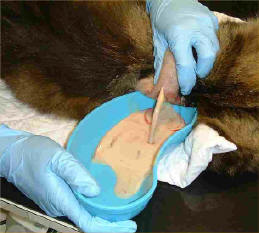
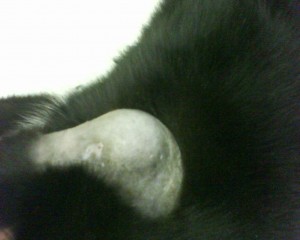
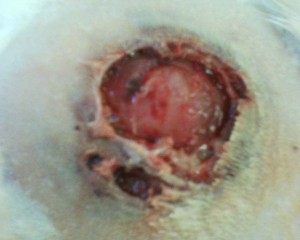
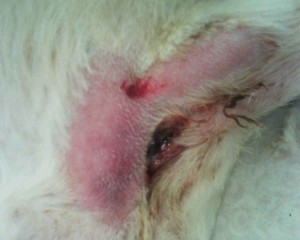
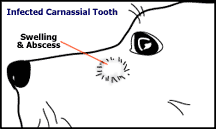
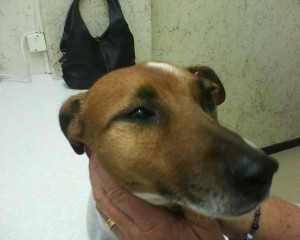
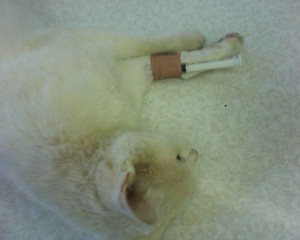
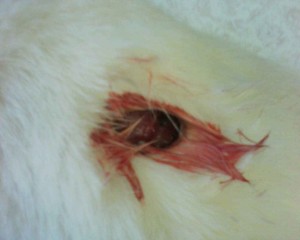
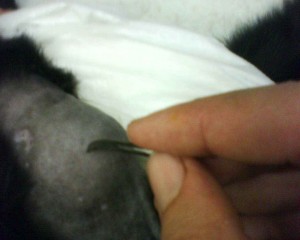
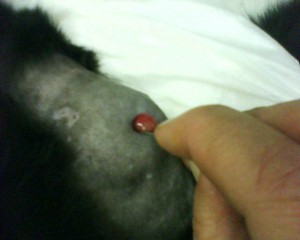
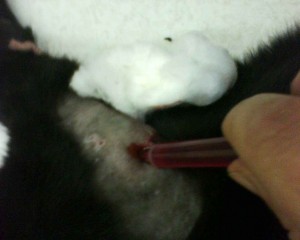
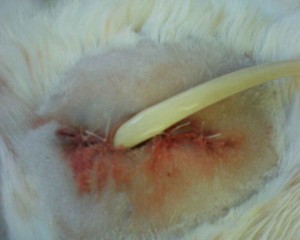
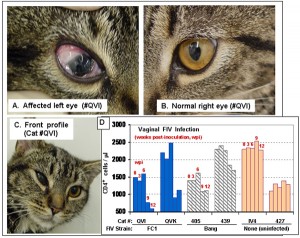
Leave a Reply
You must be logged in to post a comment.